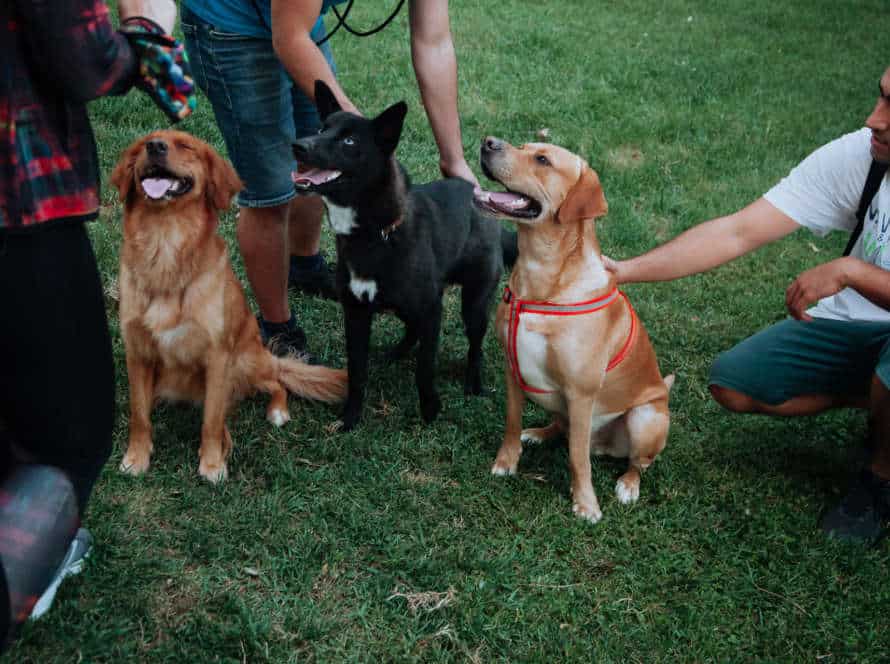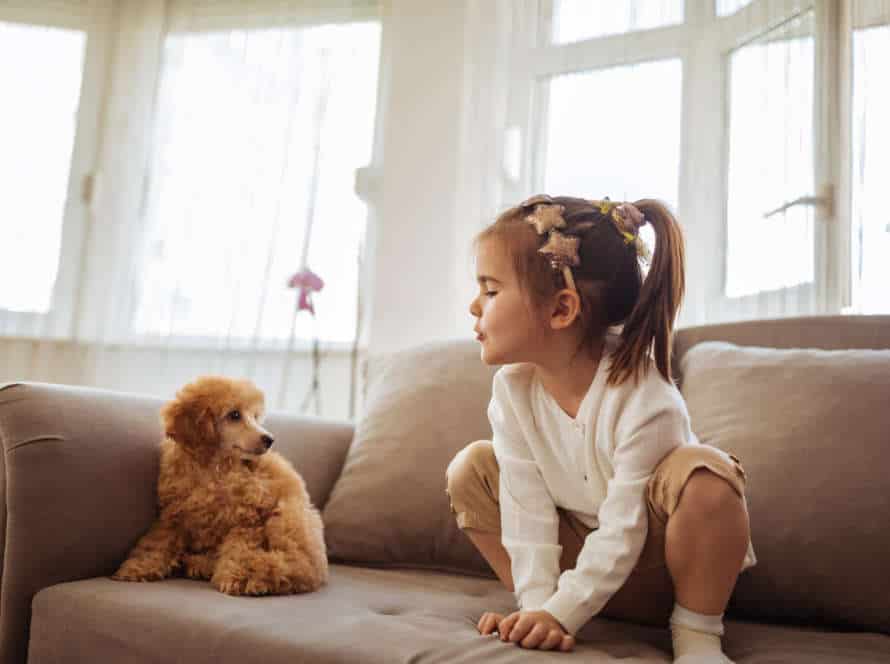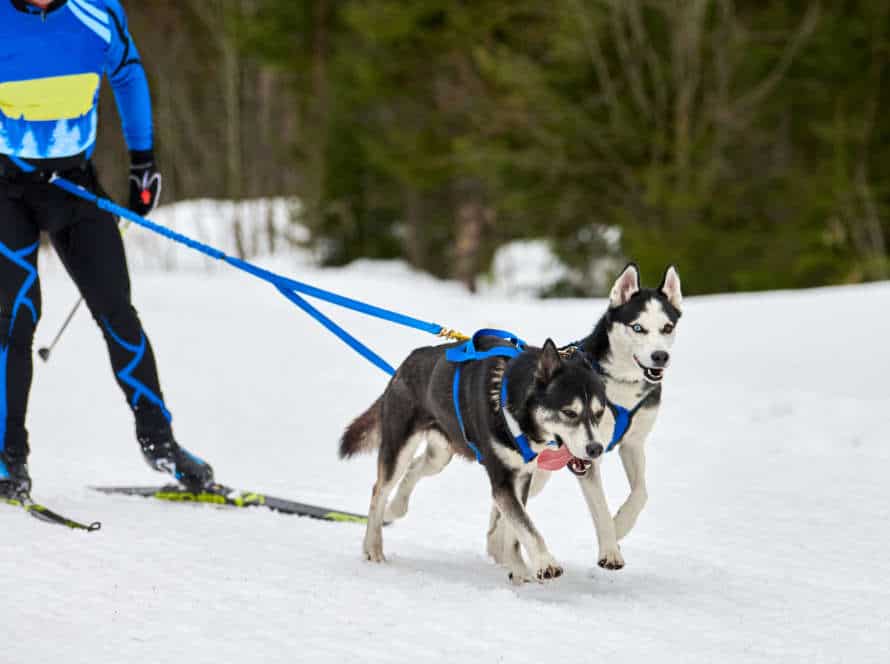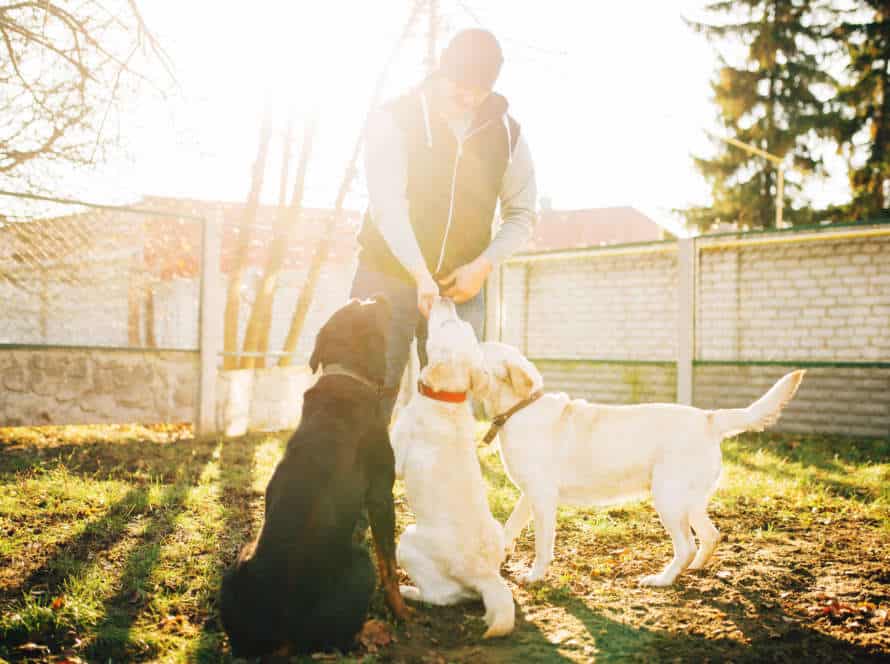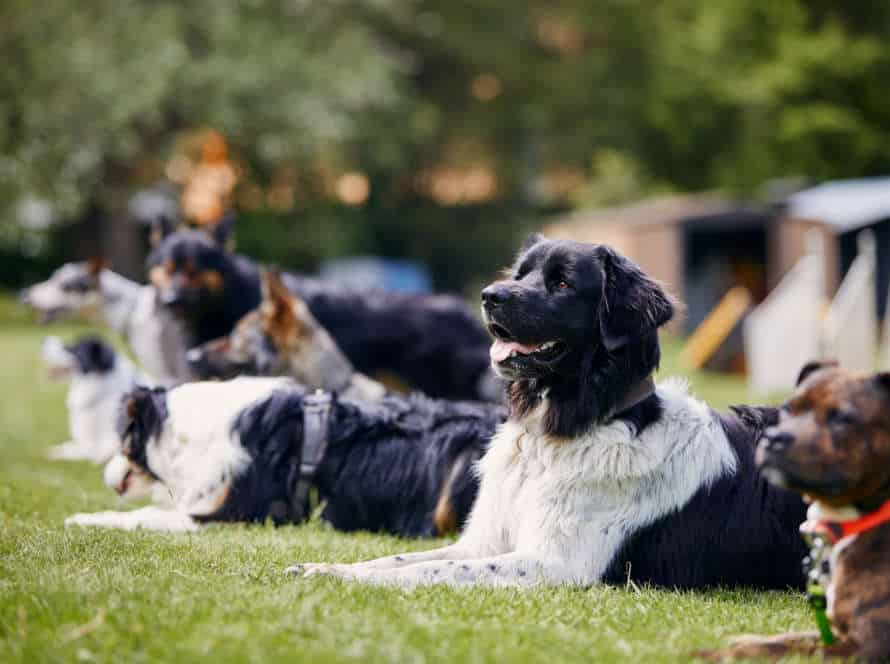Understanding your Reserved Puppy
Getting a reserved pup can be thrilling! But, to create a strong bond, you need to nurture it. Remember, these pups had a harsh start in life. Extra effort is needed to build trust. Here are some ways to interact with your reserved pup and form a trusting relationship:
- Be patient and kind – Start with small gestures and observe how your pup reacts
- Use a soft and soothing voice – this will make your pup feel safe and secure
- Avoid sudden movements or loud noises – this can startle your pup and cause anxiety or fear
- Use treats and positive reinforcement – this will help your pup associate good behavior with rewards
- Spend quality time together – regular walks, playtime, and cuddles will help build a strong bond
Recognizing a reserved puppy
A reserved puppy is one that is naturally timid. Here are signs your pup may be reserved and tips to bond with it:
Signs:
- Avoidance: Hiding or avoiding interactions with strangers.
- Tension: Body stiffens, tail tucks and ears flatten.
- Slow to warm up: Takes longer to approach or accept rewards.
Tips:
- Give time to adjust.
- Positive reinforcement training.
- Gentle physical touch and affection.
- Be patient, consistent and understanding.
Building trust takes time, patience and love. Encourage pup to trust you and the world around.
Factors contributing to a reserved puppy’s behavior
Genetics, early life experiences, and environment all play a role in a puppy’s behavior. If your pup is shy, there are things to consider:
- Genetics: Certain dog breeds tend towards shyness. Look into the breed of your pup.
- Early life experiences: Traumatic or negative experiences, lack of socialization, can lead to shyness.
- Environment: If your pup feels threatened or unsafe, it may be shy.
Nurturing Trust: Patience, positive reinforcement, and building trust are key. Create a safe, loving environment for your pup to grow in.
Addressing the root cause of reserved behavior
A pup’s reserved behavior can come from many things. To bond with your pet, it’s important to know the cause. Here are some possibilities:
- Genetics: Certain breeds can be more shy than others.
- Lack of Socialization: If they don’t meet people and animals between 3-14 weeks, they may be skittish.
- Past experiences: If they had bad experiences, like abuse, they may be scared of reminders of it.
To nurture trust, you must find the root cause. Patience and positive reinforcement can help them become more confident. Gradually exposing them to new people and situations can help too.
Building Trust with Your Reserved Puppy
Getting a timid pup can be hard. You must first create trust and then make a connection. This journey is slow, yet substantial. You must have endurance, knowledge and steadiness. We’ll look at how to do it. Here are some helpful tips to gain trust with your shy pup:
Create a safe and stress-free environment
Creating a secure and low-stress atmosphere is vital for constructing trust and growing a connection with your timid pup. Here are some ways to do it:
- Establish a routine. Having a predictable routine helps your pup adjust to their new home and trust you as their guardian. Set a consistent timetable for mealtime, exercise, and play.
- Give a specific space. Make a calm and secure area for your pup to rest and play. This could be a crate or spot in your house, so they know where to go when they need to chill.
- Use positive reinforcement. Appreciate good behavior and ignore bad behavior to boost good habits and construct trust with your pup.
- Stimulate socialization. Carefully introduce your pup to unfamiliar people, animals, and places to help them build social skills and ease anxiety.
By making a secure and relaxed atmosphere, you can form trust with your timid pup and foster a lifelong relationship full of love and friendship.
Respect your puppy’s space and boundaries
For a strong rapport with your timid pup, respecting their space and limits is key. It’s normal for pups to be shy or hesitant around people or other animals, and it’s important to give them time to adjust at their own pace, and not push them to socialize. Here are tips for respecting puppy space:
- Let your pup come to you before petting them.
- Sniffing your hand before touching.
- No direct eye contact or leaning over.
- Provide a safe, quiet spot for when they feel overwhelmed.
- Recognize signs of fear or stress, and remove pup if needed.
- Be patient and supportive as they learn to trust you.
Pro tip: Use treats or toys to reward good behavior.
Positive reinforcement training
Positive reinforcement training is the way to go if you want to build a trusting bond and reinforce good behavior with your reserved puppy. Rewards like treats, toys, or praise are used instead of punishments for bad behavior. Here are some tips to help you get started:
- Identify simple and achievable behaviors like sitting and coming when called.
- Use high-value treats/toys to reward your pup for the desired behavior.
- Be consistent in your approach and don’t punish.
- Gradually increase the difficulty of the behaviors and use less treats.
Positive reinforcement training will help you bond with your reserved pup and teach obedience, creating trust.
Communicating with Your Reserved Puppy
Communicating is essential for developing a strong relationship with your shy pup. Utilizing words and body language allows you to express your feelings to the pup. This fosters trust and understanding between you and your pup.
Here’s some advice on how to communicate with a reserved puppy and how to nurture trust between you and your fur baby.
Utilize non-verbal communication
Use non-verbal communication to communicate with your shy pup and generate trust for bonding. Pups, like us humans, express lots through body language and non-verbal cues. Here’s how to use non-verbal communication for better communication with your shy pup:
- Make eye contact. Look at your pup in the eyes to show them that you’re listening and paying attention.
- Facial expressions. Show excitement when they behave well, and frown or look serious when they misbehave.
- Open body language. Make them feel safe and relaxed around you. Avoid leaning over them or sudden movements.
- Use gentle touch. Show affection and comfort your pup when they’re nervous or scared.
- Calm, soothing tone. Reassure your pup that everything is okay.
Non-verbal communication helps build trust and a strong bond with your shy pup. Establish a deeper connection with them.
Understanding body language and cues
It’s essential to recognize body language and cues when connecting with a shy pup. Follow these tips to understand your pet better:
- Tail-wagging: A tail-wag can mean excitement, joy, tension or stress. It depends on the speed and direction.
- Yawning: Too much yawning might mean discomfort or anxiety.
- Ears: Upright ears can mean interest or curiosity. Flattened ears could be a sign of submission or fear.
- Posture: Relaxed and loose body language = calmness and satisfaction. Stiff or crouched body language = fear or anxiety.
By keeping an eye on your pup’s body language and cues, you can figure out their feelings and act accordingly. That way, you can build trust and strengthen your bond.
Establishing clear communication with your puppy
For pet owners who have reserved puppies, clear communication is essential to build trust and bond. Here are some tips:
- Use positive reinforcement. Rewards and treats help get their attention and motivate them to learn. Avoid punishment, as it breaks trust.
- Be consistent. Use same voice tone, body language and commands every time. This will help your puppy understand and avoid confusion.
- Give them space and time. Don’t force interaction if they seem uncomfortable. Give them space to relax and observe surroundings. Gradually, they’ll start trusting you.
- Patience is key. Building trust and bonding takes time and patience. Be patient and communicate positively and lovingly. With consistency and patience, your reserved puppy will respond to your commands and form a strong bond.
Activities to Strengthen the Bond with Your Reserved Puppy
Getting a puppy from a rescue? Important! Build trust. Foster a strong bond. It requires patience. Spend time with your pup. Be consistent in training. Be mindful when around your pup. All of this will help make a strong bond between you and your pup!
Daily exercise and playtime
Every day, exercising and playing are really important to create a stronger bond with your shy pup and build trust. A few tips:
- Make a specific time for exercise and play.
- Pick activities that fit your pup’s personality and energy – like fetch, tug-of-war, or hiking.
- Use good reinforcement techniques during playtime.
- Change up toys and activities to keep them interested.
- Go out and explore new places together to form a sense of trust.
Keep in mind, exercise and play are not only important for physical health, but also for socialization and emotional well-being.
Interactive training exercises
Interactive training is a great way to build a strong connection with a reserved pup and foster trust. These activities not only help the pup’s physical growth but also give mental stimulation. Here are some exercise activities to strengthen the bond with your reserved pup:
- Hide and Seek: Hide their favorite toy behind furniture or in another room and encourage them to find it.
- Fetch: Use a ball or toy to play fetch with your pup.
- Training sessions: Have short training sessions every day to teach them new skills and reinforce good behavior.
- Walks: Take your pup on daily walks in a safe, comfortable environment. This helps to create trust and allows them to learn from their surroundings.
Regular interactive exercises can help your pup gain trust, build a strong bond, and be a happy, healthy adult dog.
Pro tip: Use treat-training from an early age to instill positive reinforcement.
Bonding activities like cuddling and grooming
Forging a connection with your shy puppy? Cuddling and grooming may be the key! Here are some tips to help get you started:
- Cuddling: Begin by making a cozy spot, then talk softly and pet gently. Wrap your arm around them, or hold them close. Some may not be ready for cuddling straight away, so be patient and try again later.
- Grooming: Regular grooming can create a bond and keep their coat healthy. Use a soft brush or comb and brush their fur. Give treats and praise during the session.
Show love and patience and your reserved pup will learn to trust and feel safe around you.
Seeking Professional Help
Bonding with a shy pup can be tricky. That’s why it’s smart to get a pro’s help! A certified trainer can offer guidance and aid as you build a connection with your pup. They can show you how to use positive reinforcement, and even fun games to help socialize the pup. Plus, if needed, they can provide medical care. So, let’s look at the advantages of getting expert help.
Identifying when to seek professional help
It’s essential to recognize when to get pro help while forming trust and bonding with a timid pup. Building trust with a shy or reserved pup can be hard, but certain behaviors and signals can tell you when they may need expert help. Examples: extreme fearfulness, too much shyness, aggression, or destructive acts.
Professional help can include a certified dog trainer, vet behaviorist, or dog behavior specialist. Each of these pros have the right skills and training to check your pup’s temperament and craft a personalized behavior modification plan for their specific needs. Getting pro help isn’t a sign of defeat; it’s the first step to a healthy and positive relationship with your furry friend.
Finding a professional trainer or behaviorist
Discovering an expert coach or behaviorist is essential when it comes to looking after trust and connecting with your timid puppy. A professional will have the aptitude and experience to evaluate your puppy’s conduct and character, recognize any basic issues, and make a customized preparation plan to improve the trust and tie between you and your puppy. They can likewise give you valuable hints and deceives on the most proficient method to speak with your cuddly companion viably, which in the end helps to reinforce your relationship.
Here are some tips for finding a professional trainer or behaviorist:
- Investigate and read surveys of nearby mentors/behaviorists.
- Check if the professional is confirmed or has pertinent preparing accreditations.
- Interview potential trainers to guarantee their strategies coordinate with your qualities and objectives as a pet proprietor.
- Watch a preparation meeting to check whether the coach is a decent fit for you and your puppy.
- Continuously pick a mentor who uses positive fortification strategies over discipline.
Recall that an expert mentor or behaviorist is an investment in your puppy’s future and your relationship with them.
Working with a professional to address reserved behavior issues
Working with a pro can help you strengthen your bond with your pup. Here’s what to do:
- Research a trainer or behaviorist with experience in reserved dogs.
- Set up a consultation and create a training plan.
- Attend regular sessions with your pup, using positive reinforcement, socialization, and obedience training.
- Follow up with the trainer/behaviorist to track progress.
With patience and guidance from a pro, you can foster trust with your pup.
Pro Tip: Rewarding good behavior and redirecting bad behavior can help your reserved pup gain confidence in you.
Frequently Asked Questions
Q: How do I build trust with my reserved puppy?
A: Building trust with a reserved puppy takes time and patience. Start by establishing routine and consistency in feeding, exercise, and training. Offer praise and rewards for good behavior and avoid punishment or harsh physical corrections.
Q: What should I do if my reserved puppy seems scared or anxious?
A: If your puppy shows signs of fear or anxiety, remain calm and reassuring. Avoid overstimulation and gradually expose them to new experiences at a pace they can handle. Consider seeking guidance from a professional trainer or behaviorist.
Q: Can I socialize my reserved puppy?
A: Yes, socialization is important for all puppies, including reserved ones. Start with small, controlled interactions with other dogs and people and gradually increase exposure at their pace.
Q: Should I force my reserved puppy to cuddle or play?
A: No, forcing physical interaction can further damage trust and lead to fear and anxiety. Instead, offer the opportunity for affection and play, but respect your puppy’s boundaries and allow them to initiate contact at their own pace.
Q: How can I build a strong bond with my reserved puppy?
A: Building a strong bond with a reserved puppy requires patience, consistency, and positive reinforcement. Spend time daily engaging in activities your puppy enjoys, such as walks, training, or playtime, and always offer praise and rewards for good behavior.


